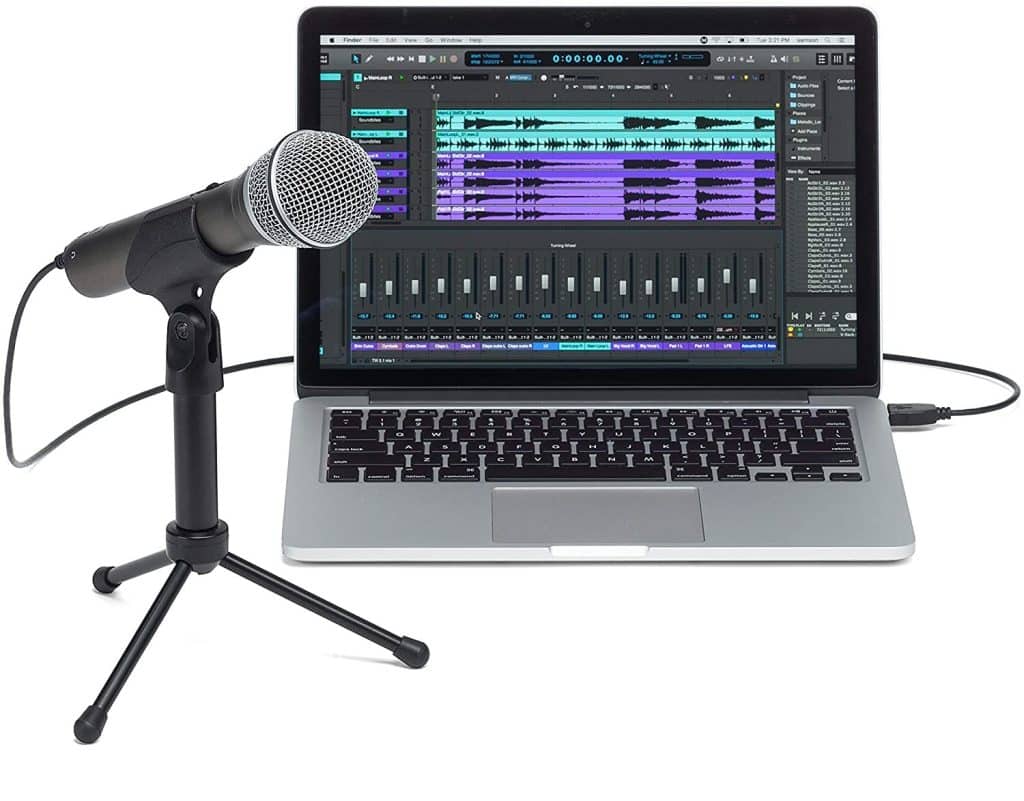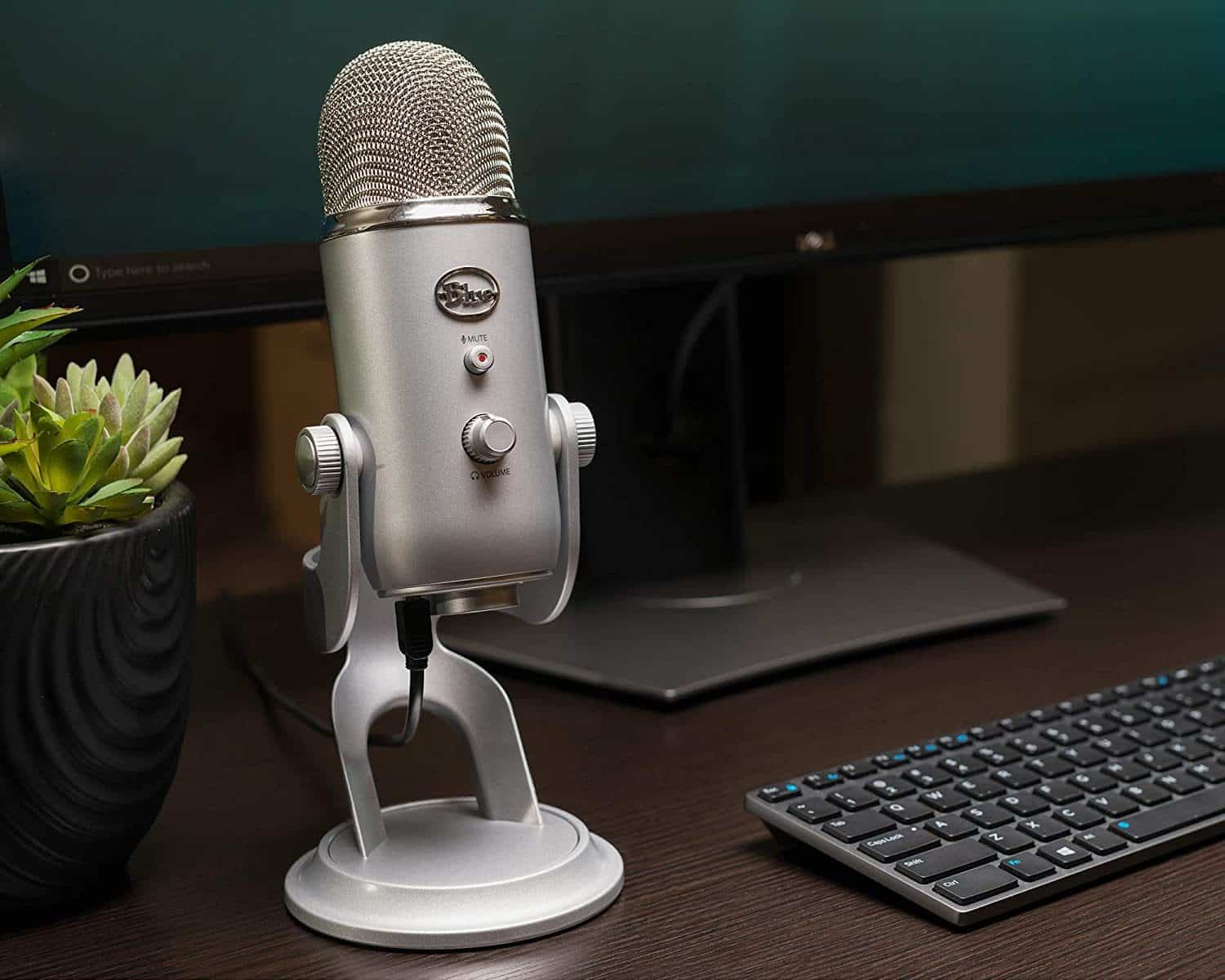Looking for recommendations on the best microphone to use for podcasting?
We’ve got you covered and have collected recommendations from established podcasters on what mics they recommend and why. Read on to find a mic that meets the needs of your show … and your budget.

The Best Mic Isn’t Always the Most Expensive
When I get asked what the best mic for podcasting is, my short answer to this question is, “the best mic is the one you use.”
Lots of podcasters (or wannabe podcasters) focus too much on equipment and never put out episodes, so it doesn’t matter what mics they own.
As far as a specific mic suggestion though, ATR-2100 by Audio-Technica is a great utility mic that will allow you to plug directly into a computer via USB or use with a mixer via XLR connection, so it can handle whatever situation you find yourself in.
For around $60, it’s hard to beat. I have a couple and use them regularly, even though I own much more expensive mics in my studio that I could just as easily use.
Remember the right mic for the job isn’t always the most costly.

My #1 Recommendation(s)
If you’re just getting started, my #1 recommendation is the Samson Q2U (around $60). It’s a dynamic microphone that works well in most rooms. It has a USB connection so you can connect it directly to your laptop.
It also supports an XLR connection for connection to a sound card. This is recommended to help boost the gain on the mic and will give you control over your headphone levels.
My recommendation for a 1-channel sound card is the Focusrite Solo (around $110).
When you’re ready to step up to studio quality, my next recommendation is the Shure SM7B (around $385). You’ll need a Sound Card to boost the level as this mic is a bit gain hungry. Again the Focusrite Solo (around $110), or the Focusrite 2-Channel (around $160), will sound great.
Pro Tip: Use a mic boom arm to help position the Shure closer to your mouth for the best sound. The majority of podcasts are consumed on a mobile device with earbuds, so as a host, you want your sound to be as clean and clear as possible. Heil PL2T Boom Arm.

Choose Dynamic over Condenser Microphones
My podcasting partner and I have learned a TON since we started, such as the microphone is key!
After consulting with a professional sound designer who edits and mixes our podcast, we’ve landed on two relatively inexpensive cardioid dynamic USB/XLR mics (Audio-Technica ATR2100-USB Cardioid Dynamic USB/XLR Microphone -about $65 on Amazon.com) that plug directly into my Macbook Pro.
They are held up by two scissor arm stands that connect to the table and suspend the mics in front of us. And finally, a couple foam ball windscreens plus wind pop filters complete the setup. We started out using more expensive condenser microphones which turned out to be a mistake.
For podcasting, definitely choose dynamic over condenser microphones! You can hear the improvement in sound quality by listening to the first few episodes of our podcast, Latter-Day Lesbian, then comparing them to the latest ones.
With our dynamic microphones it’s okay if you don’t have a completely soundproof location. We record in a carpeted room with no absorption panels on the walls. Since it also doubles as a kids’ playroom, we are unable to construct a dedicated recording booth at this time. Also, we shut off the Heat/AC when we record – probably not the most comfortable temperature-wise, but it helps minimize noise for sure.

Consistency Is Key
I’m part of the Story Grid Editor Roundtable Podcast – since there are five of us, it’s important that we all sound consistent.
We looked at several types of microphones and landed on the Blue Yeti. The reason being that it’s directional, has variable gain, and you can mount it on a mic stand or boom. We have found that using a directional microphone with a boom stand reduces the noise and allows for a more natural speaking style.
We also use pop screens and adjust down our headphone volume to as low as possible to reduce bleed through. It took us a couple of seasons to get it right but our most recent season (number 5), the audio is stellar.
We attribute half to the microphones and the other half goes to our excellent producer/editor Anne, who you can also hear on the podcast.

Consider Your Environment
If you’re in the market for a great podcast mic, one of the first things to consider is the environment you’re recording in.
For a quiet environment (studio, bedroom closet, etc.) a nice condenser microphone is a great choice. I use the Rode NT1 in my studio. It has great dynamic response due to the large diaphragm. From whispers to screams, the Rode NT1 can handle it all, and reproduces the sound with incredible accuracy. Downside is the fragility and need to record in a relatively quiet space.
When traveling to record interviews, I use the Rode Podmic. It is purpose built for podcast recording. Podmic is a dynamic microphone, meaning it doesn’t require an external power source (phantom power), and it is rugged and travels well. It reproduces sound very well, and has a built in pop filter to eliminate plosives that can be distracting to listeners. No downside. It works well in any environment.



